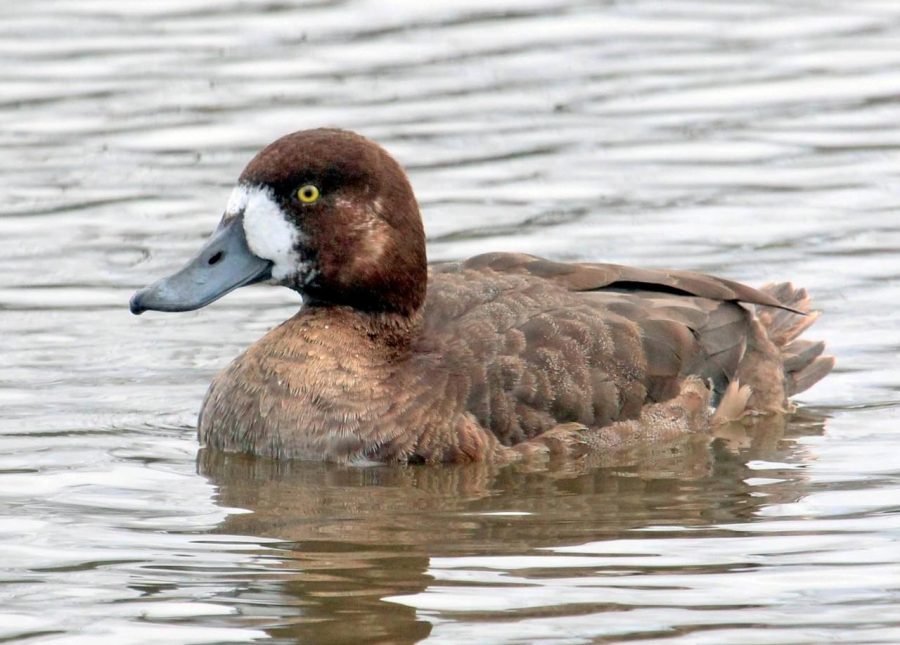
GREATER SCAUP
The east and west shorelines of the Point Pelee Peninsula, as well as the Detroit River and Lake St. Clair, in early spring and late fall are the best locations to view large numbers of Greater Scaup. If the water on the lake stays open into December, concentrations in the tens of thousands are not unheard of and once the lake freezes, the Detroit River can also be home to large numbers of this species. This species is a diving duck and often is found eating zebra mussels, which has been attributed to the large concentrations in this area.
The Greater Scaup is found primarily along the seacoast and on large bodies of water. Unlike its look-alike relative the Lesser Scaup, the Greater Scaup is found across Eurasia as well as North America.
Adult Description
Medium-sized diving duck.
Rounded head.
Bill bluish with black tip.
Male with black head, chest, and rear end, and gray sides (black on the ends and white in the middle).
Female dull brown, with white patch on face at base of bill.
Male Description
Breeding Plumage: Head, neck, upper back, and breast black; head with greenish iridescence. Back white to gray, covered with thin, black wavy lines. Rump black. Belly white. Sides white, with some fine dark streaks. Undertail black.
Non-breeding Plumage: Similar to female, but with only a few white feathers on face instead of a large white patch. Head and neck blackish brown, lighter on cheeks and chin. Breast dark with some white edging to feathers. Back brown with white edges to feathers. Underparts mottled brownish and white. Tail dark grayish.
Female Description
White area at base of bill. Head and neck dark brown with some light mottling. Back darkish brown with white flecks. Breast buffy brown. Belly whitish. Sides and flanks brown. Tail dark brown.
Immature Description
Similar to adult female.
*Image and description were sourced from: allaboutbirds.org


